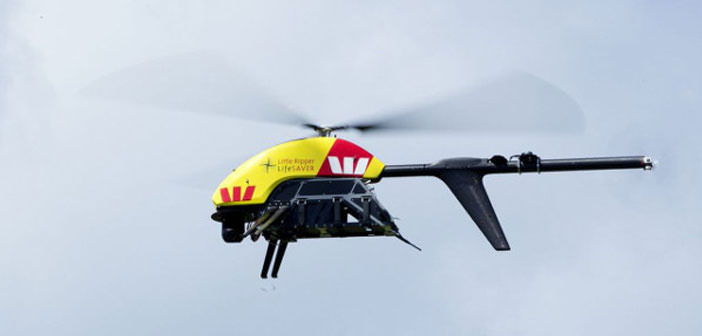In Australia, drones side by side with the shark watch
Each drone, in addition to image capture sensors, incorporates AI-powered software designed to distinguish sharks, boats and other animals and marine media: called ” Little Ripper “, these new vectors have already appeared in a program test last year, getting good results at the time.
Australia, following recent attacks by bathing sharks, announces the start of a test of a drones fleet that will patrol the coastline next month to quickly identify and report the presence of sharks near the zones bathing areas, so as to protect the bathers more.
Each drone, in addition to image capture sensors, incorporates AI-powered software designed to distinguish sharks, boats and other animals and marine media: called ” Little Ripper “, these new flying vans have already appeared in a test program last year, getting good results at the time; today, most developed and enriched with the latest technology, have all the cards in place to offer great service to the community.
Nabin Sharma, a researcher at the University of Technology School of Software in Sydney, points out that this new system is mainly aimed at improving the accuracy of shark detection from above: current perlustrations made by helicopters, albeit with trained personnel, offer a percentage of accuracy of 20-30%, as detected by a drone achieves 90% accuracy, drastically reducing false alarms.
The acquisition of the presence of one or more sharks will be carried out, in addition to real-time reporting, with photo and video aircraft that will be shared on the various information platforms in order to raise awareness among citizens; As for the immediate on-the-spot reporting, when a shark is sighted, the drone will signal the dangers to the swimmers through a megaphone as well as by means of confidential communications to ground personnel.
According to Little Ripper Group, a company that has developed these drones in the future, in addition to the simple signaling role, they may also be equipped with accessories to release, as needed, as life rafts, emergency lights or even an ” electronic shark repellent “.
https://youtu.be/HItdecoGK3A
This new sky-clearing activity is also the result of some issues with environmentalists, as at the beginning of this year, Australia began installing underwater protection networks as barriers to protect swimmers from sharks, some researchers have questioned the effectiveness of underwater networks, and environmental supporters say they could harm other wildlife that is not dangerous to humans.
In the Mediterranean, we certainly have no shark problems, but that, for example of bananas in some parts of the peninsula is particularly felt: this new road undertaken by Australia could also be a good example of semi-automatic and relatively inexpensive means of control to patrol the coasts from above but not only.

